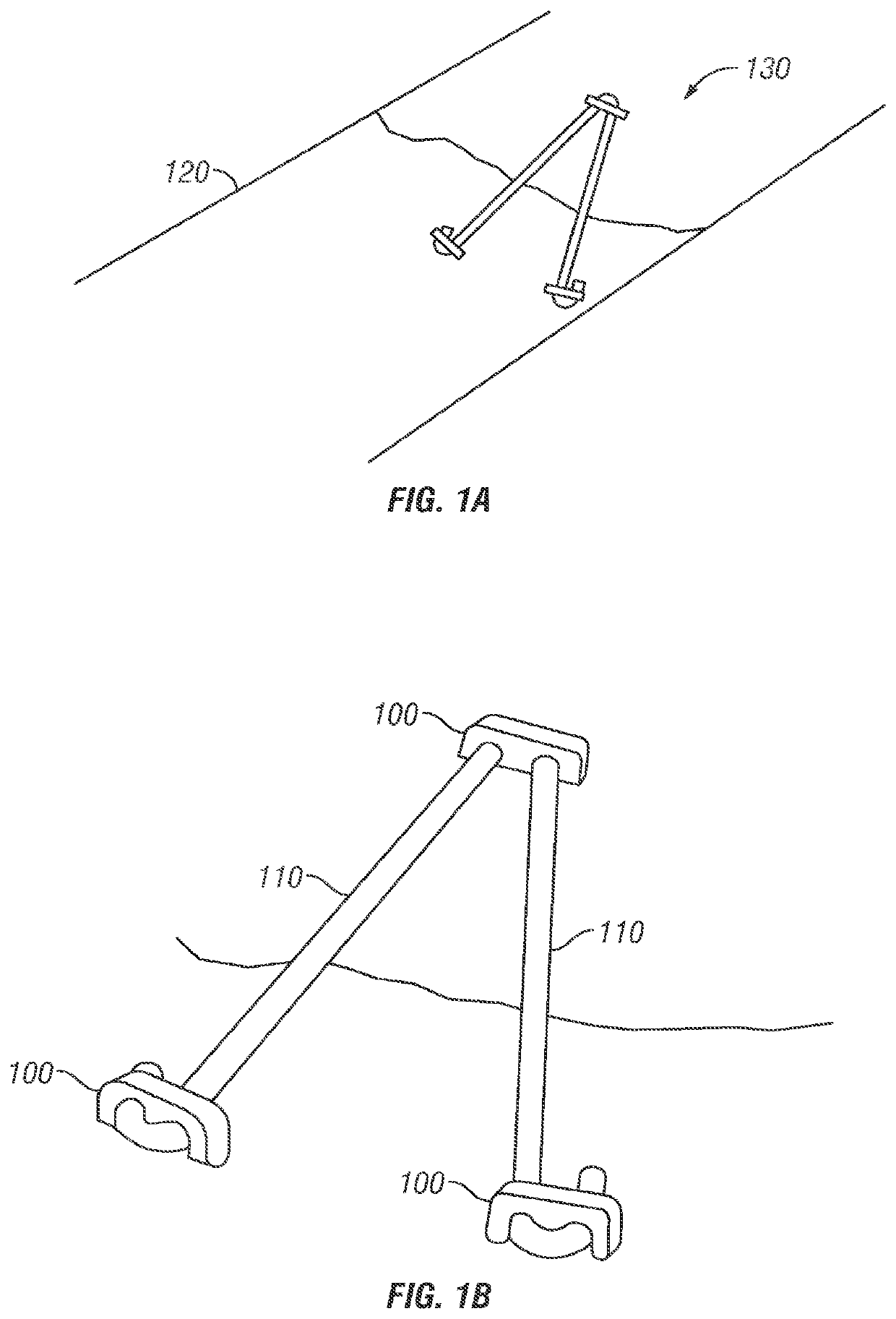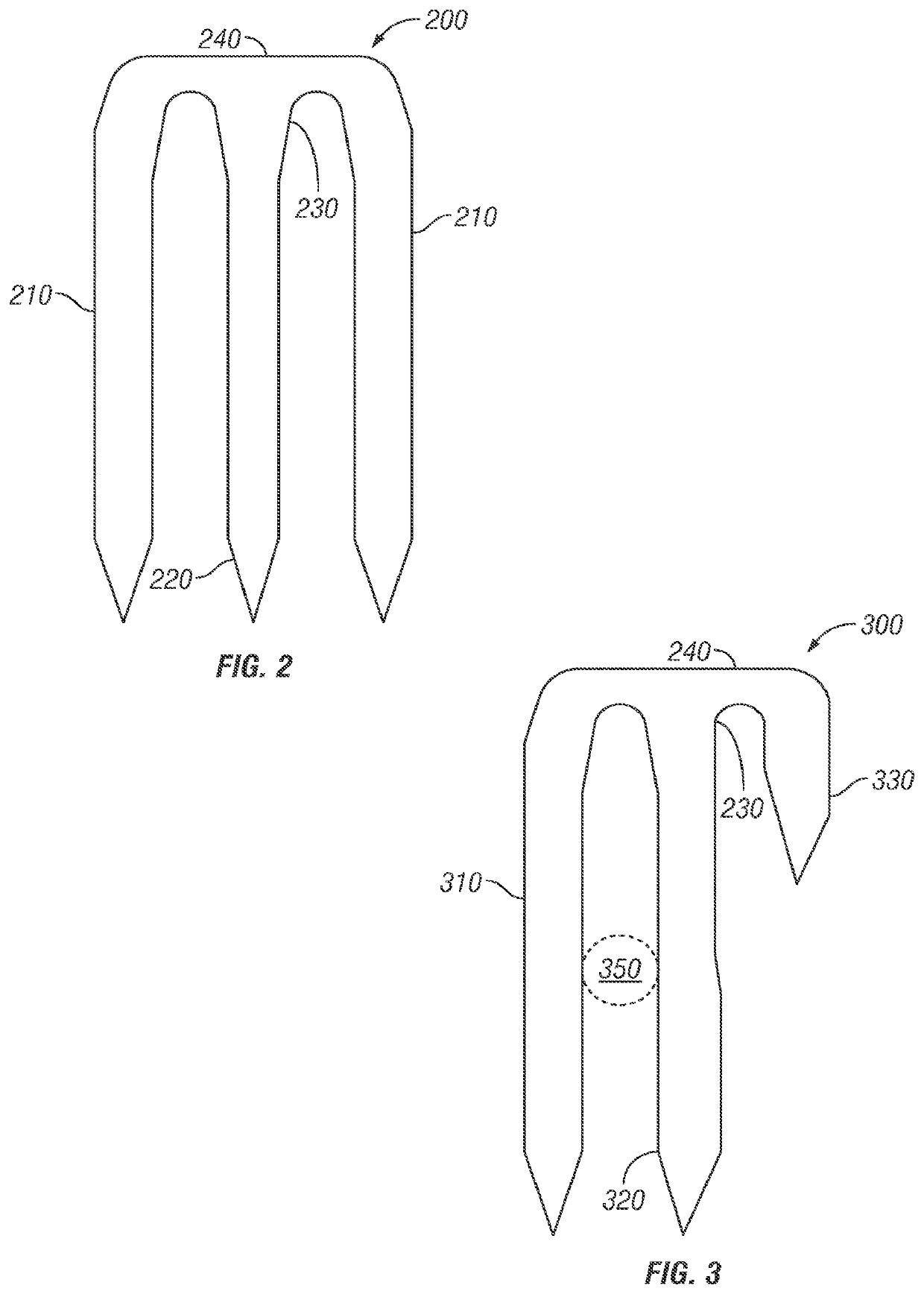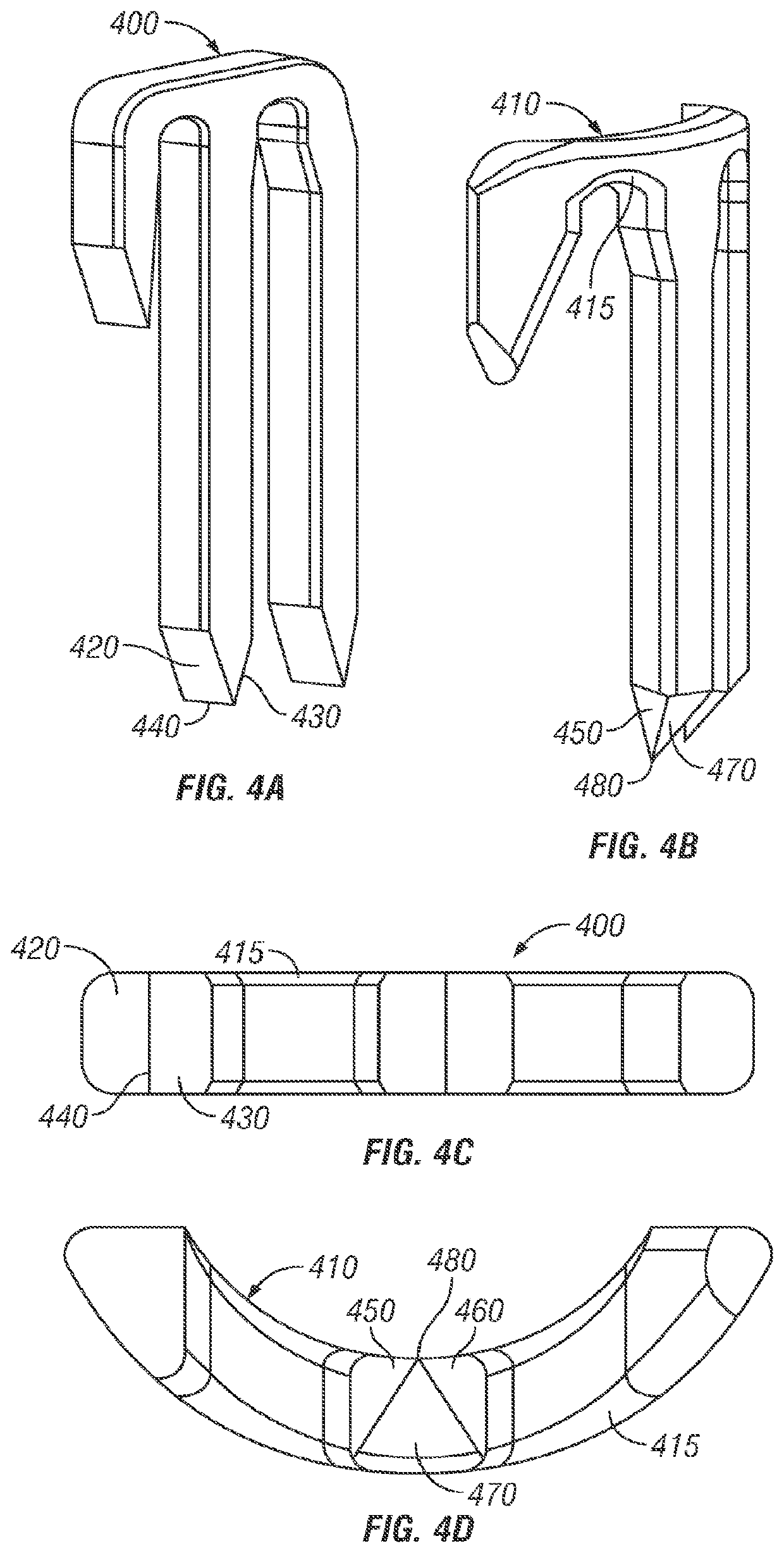Vector compression system
a compression system and valve technology, applied in the field of surgical bone fixation technology, can solve the problems of high relative movement of bone fragments, inability to provide significant compression, etc., and achieve the effect of improving the clinical utility of the method, reducing the risk of fracture, and improving the clinical
- Summary
- Abstract
- Description
- Claims
- Application Information
AI Technical Summary
Benefits of technology
Problems solved by technology
Method used
Image
Examples
Embodiment Construction
[0077]The vector compression system (130) of FIGS. 1A and 1B illustrates a basic environment (e.g., at or over a fracture of a bone (120)) in which the present embodiments may be implemented. In the example shown, a fractured bone (120) is “sewn” together using a series of polymeric cored braided sutures (110) and anchors (100) placed on either side of the bone fracture site. The present disclosure presents several embodiments (e.g., 200, 300, 300, 400, 410) of novel designs for the anchors (100) that can be used in such a system. As noted above, the suture (110) can, for example, comprise the prior art cables disclosed in U.S. Pat. No. 6,589,246.
[0078]FIG. 2 shows the “E” shape of the first embodiment of basic anchor (200). In this embodiment, the anchor (200) includes two outside (210) prongs and one middle (220) prong with all three prongs having substantially equal lengths, and a bridge (240) extending between and coupled to (e.g., unitary with) the prongs. In contrast, the vect...
PUM
 Login to View More
Login to View More Abstract
Description
Claims
Application Information
 Login to View More
Login to View More - R&D
- Intellectual Property
- Life Sciences
- Materials
- Tech Scout
- Unparalleled Data Quality
- Higher Quality Content
- 60% Fewer Hallucinations
Browse by: Latest US Patents, China's latest patents, Technical Efficacy Thesaurus, Application Domain, Technology Topic, Popular Technical Reports.
© 2025 PatSnap. All rights reserved.Legal|Privacy policy|Modern Slavery Act Transparency Statement|Sitemap|About US| Contact US: help@patsnap.com



